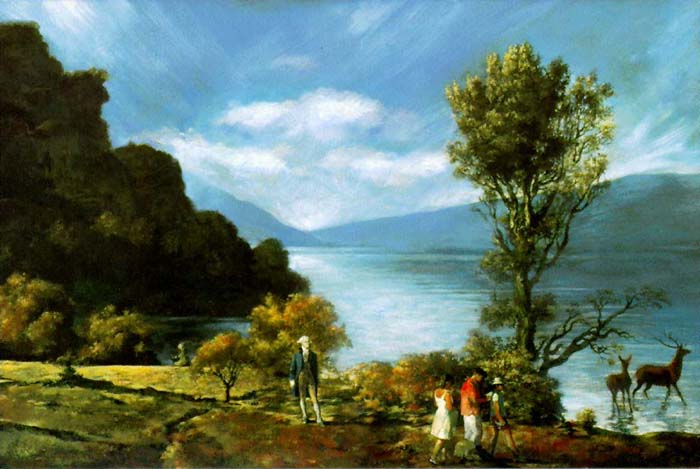Is American Art History Conservative?
Guest Editor
In a way, the question we have asked of our five respondents: “Is American art history conservative?” is an odd one. Despite the troublingly combative obduracy that the psychic and physical boundaries of American-ness have assumed in the larger political discourse this election season, the field of American art history has never been more catholic in its interests or inclusive in its approaches.
As the recent “global turn” continues to reshape the topographies underlying the field, however, it seems like a good time to take stock of the ways in which patterns of conservatism and innovation have and will continue to figure across this shifting terrain.

We have invited a diverse slate of scholars working on a variety of historical moments in American art to respond, including academics representing every stage of academic rank, from Ph.D. candidate to full professor, as well as one respondent who works in both academic and museum contexts.
Responses
Jennifer Doyle, Professor of English, University of California, Riverside
Bruce Robertson, Professor, History of Art and Architecture, University of California, Santa Barbara
Emily Casey, Doctoral Candidate, Art History, University of Delaware
Michael Guadio, Professor of Art History, University of Minnesota
Catherine Holochwost, Assistant Professor, La Salle University
It is, of course, difficult to characterize such thoughtful responses in broad strokes, but if there is a common leitmotif throughout them, it is a question of the margins and the center. What kinds of objects, artists, methods, and geographies fit comfortably within American art history as it stands now, and how should that change as the discipline goes forward? Who speaks for American art? Which institutions, departments, and agencies speak louder than others? And what does it say about the discipline when many who arguably work on American art, broadly defined, are more comfortable working outside or on the margins of the discipline than within it?
The responses in this installment of the Bully Pulpit raise these questions and more. We hope that the field will respond to and debate the issues they raise in a future edition of Panorama.
In Issue 2.2, we will compile the views of you, the readers, in a response section to the Bully Pulpit. This is your opportunity to respond to, argue about, and take positions on this hotly contested issue. So, please formulate your thoughts, and send them to journalpanorama@gmail.com with the subject line “Bully Pulpit: Is American Art History Conservative?” (To read the responses to last issue’s Bully Pulpit on Connoisseurship, see our “Talk Back” feature in this issue.)
DOI: https://doi.org/10.24926/24716839.1542
PDF: Holochwost – Bully Pulpit Intro
The Bully Pulpit is a regularly recurring section that pairs short scholarly and polemical essays with brief responses from academics, curators, critics, and other interpreters of American art and visual culture. Expanding on the contemporary meanings of the section’s title (and departing from some of its Rooseveltian resonances), we conceive the Bully Pulpit as a unique space for argumentation and investigation, a space where Americanists can jointly discuss pressing problems or difficult questions—be they scholarly, curatorial, pedagogical, or professional in character—of general interest to the field. With this in mind, we invite our readers to submit short scholarly essays, provocation pieces, roundtables, or ideas for future Bully Pulpit sections to: journalpanorama@gmail.com.
About the Author(s):

